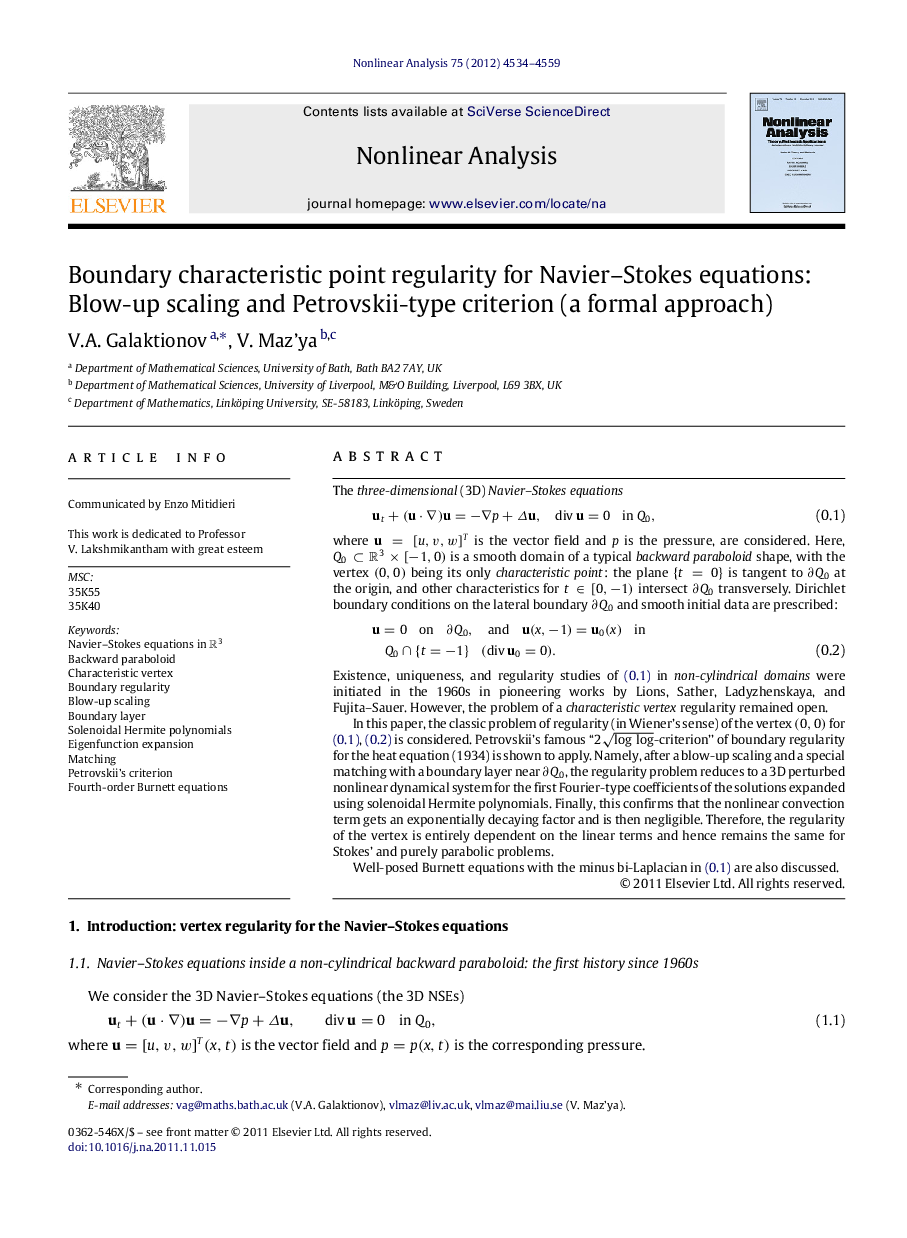| Article ID | Journal | Published Year | Pages | File Type |
|---|---|---|---|---|
| 840594 | Nonlinear Analysis: Theory, Methods & Applications | 2012 | 26 Pages |
The three-dimensional (3D) Navier–Stokes equationsequation(0.1)ut+(u⋅∇)u=−∇p+Δu,divu=0in Q0, where u=[u,v,w]T is the vector field and pp is the pressure, are considered. Here, Q0⊂R3×[−1,0)Q0⊂R3×[−1,0) is a smooth domain of a typical backward paraboloid shape, with the vertex (0,0)(0,0) being its only characteristic point : the plane {t=0}{t=0} is tangent to ∂Q0∂Q0 at the origin, and other characteristics for t∈[0,−1)t∈[0,−1) intersect ∂Q0∂Q0 transversely. Dirichlet boundary conditions on the lateral boundary ∂Q0∂Q0 and smooth initial data are prescribed: equation(0.2)u=0on∂Q0,andu(x,−1)=u0(x)in Q0∩{t=−1}(divu0=0). Existence, uniqueness, and regularity studies of (0.1) in non-cylindrical domains were initiated in the 1960s in pioneering works by Lions, Sather, Ladyzhenskaya, and Fujita–Sauer. However, the problem of a characteristic vertex regularity remained open.In this paper, the classic problem of regularity (in Wiener’s sense) of the vertex (0,0)(0,0) for (0.1), (0.2) is considered. Petrovskii’s famous “2loglog-criterion” of boundary regularity for the heat equation (1934) is shown to apply. Namely, after a blow-up scaling and a special matching with a boundary layer near ∂Q0∂Q0, the regularity problem reduces to a 3D perturbed nonlinear dynamical system for the first Fourier-type coefficients of the solutions expanded using solenoidal Hermite polynomials. Finally, this confirms that the nonlinear convection term gets an exponentially decaying factor and is then negligible. Therefore, the regularity of the vertex is entirely dependent on the linear terms and hence remains the same for Stokes’ and purely parabolic problems.Well-posed Burnett equations with the minus bi-Laplacian in (0.1) are also discussed.
